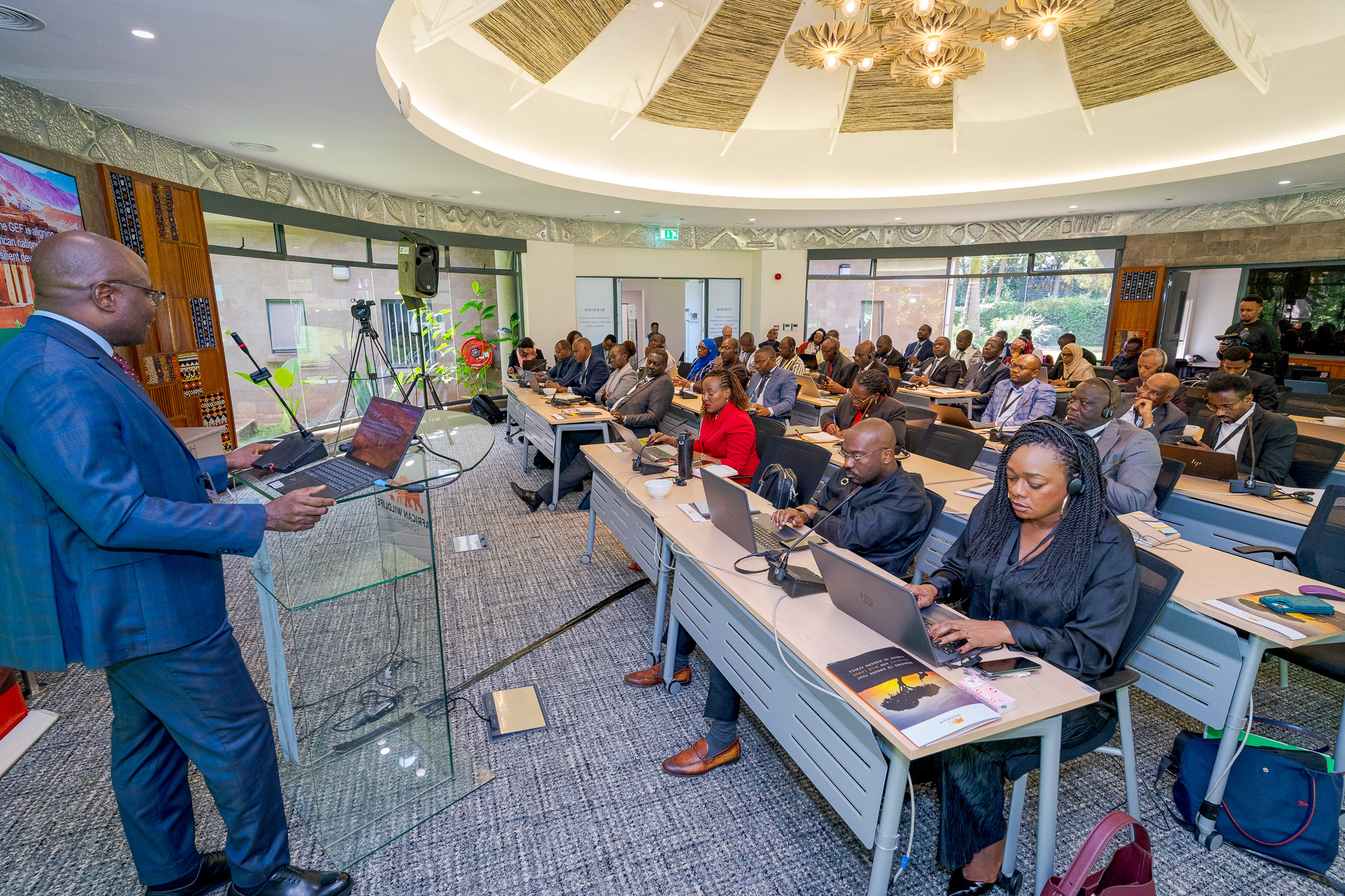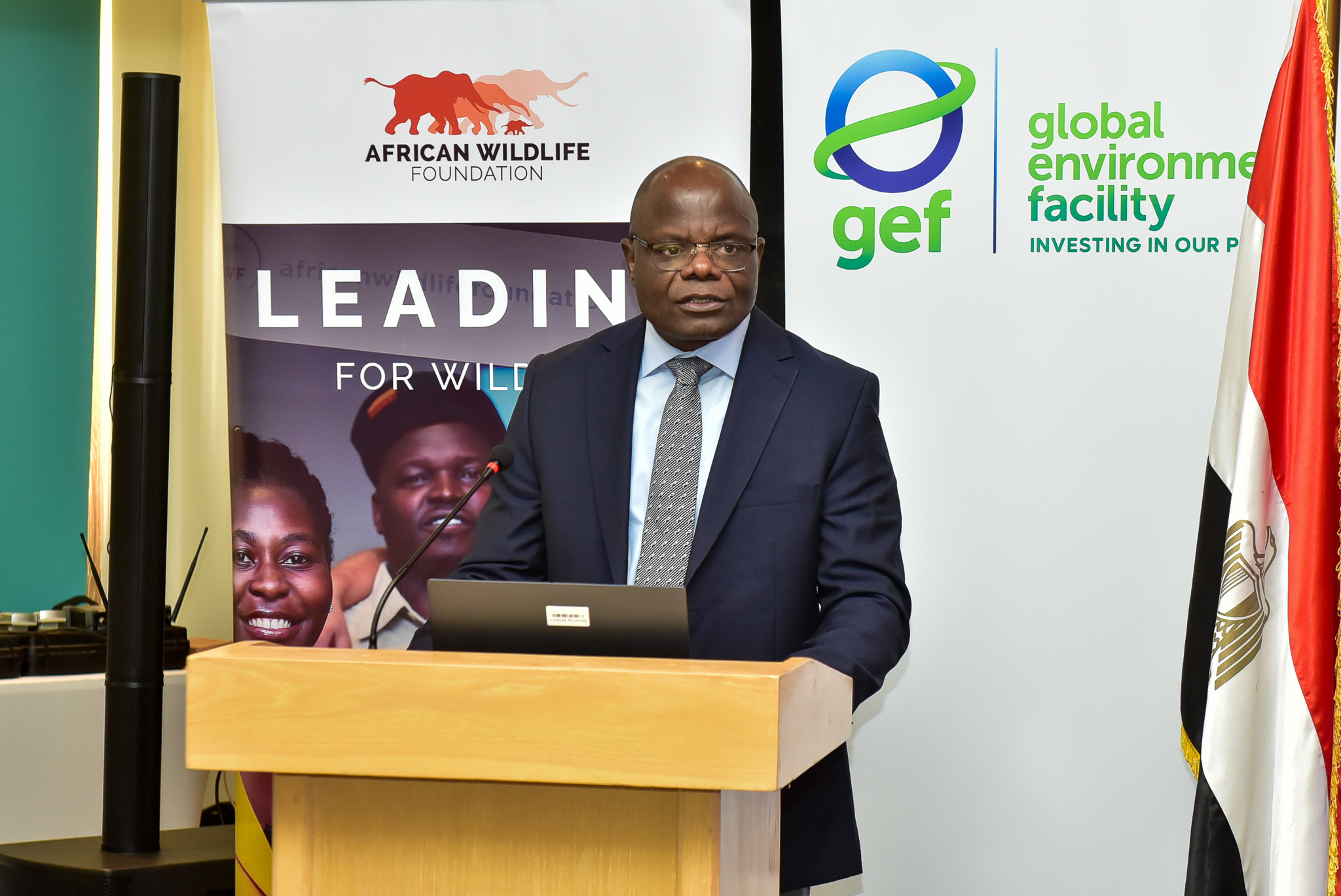Financing Africa’s Nature to Power People, Climate, and Growth: A Conversation with Jonky Tenou, GEF Africa Regional Coordinator

GEF Africa Regional Director, Jonky Tenou leads a session during the GEF Operational Focal Points (OFP's) at the African Wildlife Foundation Headquarters in Nairobi, Kenya
The Global Environment Facility (GEF) brings several multilateral funds under one roof. They work together to tackle the planet’s most urgent environmental challenges. Since 1991, the GEF has invested billions in Africa to protect biodiversity, restore land, and build climate resilience. This finance helps countries address complex problems and meet global commitments. Over three decades, the GEF has provided more than $26 billion in grants and mobilized $148 billion in co‑financing for country‑driven projects.
In this interview, GEF’s Jonky Tenou reflects on the results to date. He shares lessons from recent funding cycles and what to expect in GEF‑9. He also explains why partnering with AWF to strengthen national focal points will boost lasting impact.
Q: Over the three decades, what stands out as GEF’s most significant footprint in Africa?
Jonky Tenou: The GEF’s footprint is both broad and deep. It has invested more than $7.7 billion through its family of funds and mobilized $50 billion for over 2,000 projects. These investments created or improved management in more than 640 protected areas. That includes over 160 new sites and 480 existing ones across 280 million hectares. We have also supported conservation across 636 million hectares of forests, with major emphasis on the Congo Basin. Land restoration and drought resilience have been financed through more than 200 projects with $1.5 billion in grants, notably under the Great Green Wall. Nearly $3 billion has gone into climate mitigation and adaptation. More than $280 million targets plastic pollution in Africa. Beyond ecosystems, the Fonseca Leadership Program has backed 78 fellows, 40% of them women. These leaders inform policy and participate in global environmental negotiations.
Q: Why does leadership among GEF Operational Focal Points (OFPs) matter so much?
Tenou: Strong OFPs amplify results. They align projects with national priorities and global commitments. They convene ministries and agencies and embed stakeholder engagement. They keep projects on track through oversight and adaptive management. This leadership improves design quality and unlocks co‑financing. It also strengthens monitoring and evaluation. Most importantly, it helps institutionalize outcomes, so they endure long after a grant ends.
Q: What unique value does AWF bring to building that capacity?
Tenou: AWF is rooted in Africa. It holds trusted relationships with governments and communities. AWF translates global frameworks into practical, local tools. With AWF, OFPs receive training shaped by real policy and implementation contexts. Peer learning follows naturally. Good ideas travel and scale faster.

Jonky Tenou leading a session during the GEF North Africa Operational Focal Points (OFP's) in Sharm El Sheikh, Egypt.
Q: How are lessons from GEF-7 and GEF-8 shaping the GEF-9 approach?
Tenou: We are doubling down on integrated programming. Sectors work together to solve complex problems. Design rests on evidence‑based change pathways and adaptive learning. STAP guidance, stronger risk management, and innovation remain central. We will deepen civil‑society engagement and market transformation. GEF‑9 also expands work on marine biodiversity beyond national jurisdiction and on plastics. We emphasize early country engagement to align with national development goals from day one.
Q: Looking ahead to GEF-9, where do you see the biggest opportunities and challenges for Africa?
Tenou: Africa can lead on nature‑based solutions, biodiversity conservation, and climate resilience. Its ecosystems are rich. Its population is young. With GEF‑9, we can scale investments in sustainable land management, renewable energy, and climate action. This is especially relevant in the Sahel, the Horn of Africa, small island developing states, and coastal zones. The goal is to protect natural capital and drive inclusive development and peacebuilding. Yet challenges persist. Institutions face capacity gaps. Environmental data and monitoring remain limited. Domestic co‑financing can be hard to mobilize. Engagement with Indigenous Peoples and Local Communities also needs consistent attention. Strengthening OFP capacity is therefore strategic. Empowered focal points align national priorities with GEF programming, convene stakeholders, and embed inclusive, scalable, results‑driven projects. National steering committees often sustain this momentum.
What this means for AWF landscapes
- Protected & connected landscapes: Integrated GEF‑9 programming can secure ecological connectivity, strengthen protected‑area management, and grow community conservancies. These models deliver livelihoods with conservation from the Congo Basin to East Africa’s savannas.
- Climate‑smart livelihoods: Investments in restoration, drought resilience, and clean energy can support community enterprises and climate adaptation across priority landscapes.
- Plastics & pollution solutions: A growing GEF focus on circular economy and waste management can help cities and entrepreneurs cut leakage into rivers and wetlands.
- Next‑gen leadership: The Fonseca Leadership Fellowship complements AWF’s youth agenda. It builds African voices in science and policy that shape biodiversity outcomes.